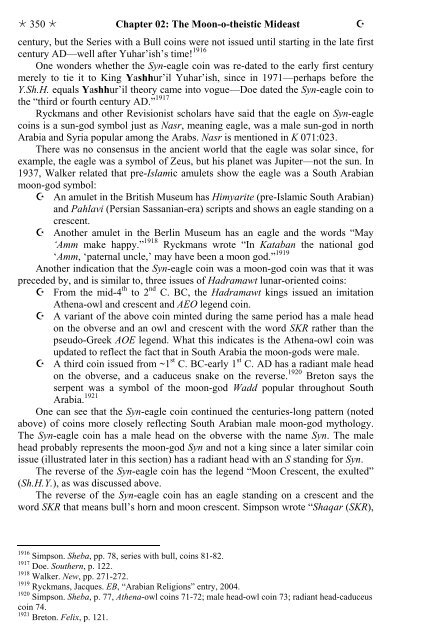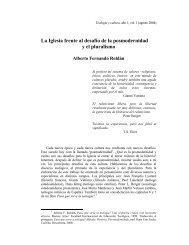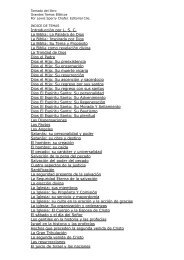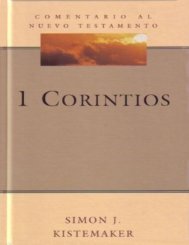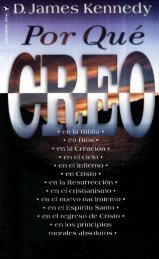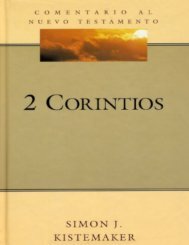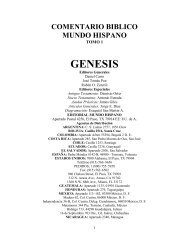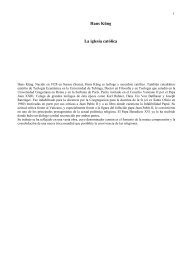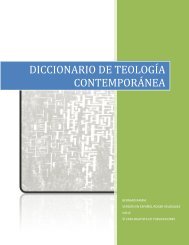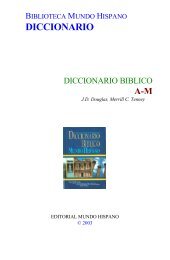Moon-o-theism: Religion of a War- and Moon-god Prophet
Moon-o-theism: Religion of a War- and Moon-god Prophet
Moon-o-theism: Religion of a War- and Moon-god Prophet
- No tags were found...
You also want an ePaper? Increase the reach of your titles
YUMPU automatically turns print PDFs into web optimized ePapers that Google loves.
350 Chapter 02: The <strong>Moon</strong>-o-theistic Mideast century, but the Series with a Bull coins were not issued until starting in the late firstcentury AD—well after Yuhar’ish’s time! 1916One wonders whether the Syn-eagle coin was re-dated to the early first centurymerely to tie it to King Yashhur’il Yuhar’ish, since in 1971—perhaps before theY.Sh.H. equals Yashhur’il theory came into vogue—Doe dated the Syn-eagle coin tothe “third or fourth century AD.” 1917Ryckmans <strong>and</strong> other Revisionist scholars have said that the eagle on Syn-eaglecoins is a sun-<strong>god</strong> symbol just as Nasr, meaning eagle, was a male sun-<strong>god</strong> in northArabia <strong>and</strong> Syria popular among the Arabs. Nasr is mentioned in K 071:023.There was no consensus in the ancient world that the eagle was solar since, forexample, the eagle was a symbol <strong>of</strong> Zeus, but his planet was Jupiter—not the sun. In1937, Walker related that pre-Islamic amulets show the eagle was a South Arabianmoon-<strong>god</strong> symbol: An amulet in the British Museum has Himyarite (pre-Islamic South Arabian)<strong>and</strong> Pahlavi (Persian Sassanian-era) scripts <strong>and</strong> shows an eagle st<strong>and</strong>ing on acrescent. Another amulet in the Berlin Museum has an eagle <strong>and</strong> the words “May‘Amm make happy.” 1918 Ryckmans wrote “In Kataban the national <strong>god</strong>‘Amm, ‘paternal uncle,’ may have been a moon <strong>god</strong>.” 1919Another indication that the Syn-eagle coin was a moon-<strong>god</strong> coin was that it waspreceded by, <strong>and</strong> is similar to, three issues <strong>of</strong> Hadramawt lunar-oriented coins: From the mid-4 th to 2 nd C. BC, the Hadramawt kings issued an imitationAthena-owl <strong>and</strong> crescent <strong>and</strong> AEO legend coin. A variant <strong>of</strong> the above coin minted during the same period has a male headon the obverse <strong>and</strong> an owl <strong>and</strong> crescent with the word SKR rather than thepseudo-Greek AOE legend. What this indicates is the Athena-owl coin wasupdated to reflect the fact that in South Arabia the moon-<strong>god</strong>s were male. A third coin issued from ~1 st C. BC-early 1 st C. AD has a radiant male headon the obverse, <strong>and</strong> a caduceus snake on the reverse. 1920 Breton says theserpent was a symbol <strong>of</strong> the moon-<strong>god</strong> Wadd popular throughout SouthArabia. 1921One can see that the Syn-eagle coin continued the centuries-long pattern (notedabove) <strong>of</strong> coins more closely reflecting South Arabian male moon-<strong>god</strong> mythology.The Syn-eagle coin has a male head on the obverse with the name Syn. The malehead probably represents the moon-<strong>god</strong> Syn <strong>and</strong> not a king since a later similar coinissue (illustrated later in this section) has a radiant head with an S st<strong>and</strong>ing for Syn.The reverse <strong>of</strong> the Syn-eagle coin has the legend “<strong>Moon</strong> Crescent, the exulted”(Sh.H.Y.), as was discussed above.The reverse <strong>of</strong> the Syn-eagle coin has an eagle st<strong>and</strong>ing on a crescent <strong>and</strong> theword SKR that means bull’s horn <strong>and</strong> moon crescent. Simpson wrote “Shaqar (SKR),1916 Simpson. Sheba, pp. 78, series with bull, coins 81-82.1917 Doe. Southern, p. 122.1918 Walker. New, pp. 271-272.1919 Ryckmans, Jacques. EB, “Arabian <strong>Religion</strong>s” entry, 2004.1920 Simpson. Sheba, p. 77, Athena-owl coins 71-72; male head-owl coin 73; radiant head-caduceuscoin 74.1921 Breton. Felix, p. 121.


